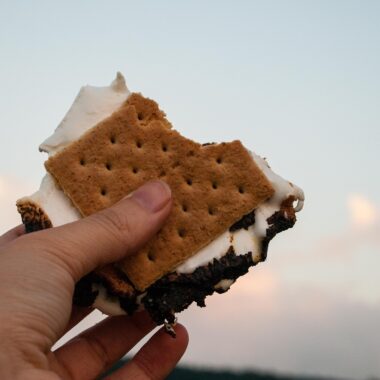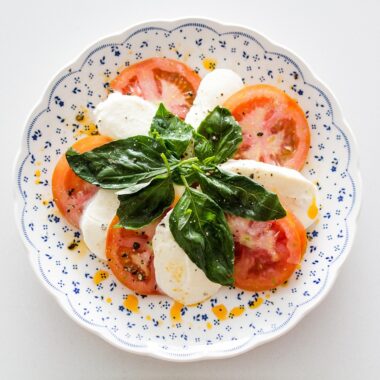The Gin and Tonic (G&T) is a timeless cocktail that has captured the hearts of drinkers around the world for its simplicity and versatility. While gin often steals the spotlight with its botanical complexity, the tonic water you pair it with is equally important. The right tonic can elevate a G&T from ordinary to extraordinary, creating a perfectly balanced drink.
In this guide, we’ll delve deep into what makes a tonic water exceptional, the key factors to consider when choosing one, and review some of the best tonic waters available for your G&T. Whether you’re a casual sipper or a connoisseur, this article will help you craft the perfect drink.
Understanding Tonic Water: What Makes It Special?
Tonic water is a carbonated beverage with a hint of bitterness derived from quinine, a compound originally extracted from the bark of the cinchona tree. While it was initially consumed for medicinal purposes, tonic water became a staple mixer in cocktails when paired with gin.
Key Characteristics of Tonic Water
Quinine Levels: The bitterness of tonic water comes from quinine. Some brands use more than others, which impacts the overall taste.
Sweetness: The level of added sugar or sweeteners affects the balance between bitter and sweet flavors.
Carbonation: The fizziness can influence the texture and drinking experience.
Flavor Enhancements: Some tonic waters include added botanicals, herbs, or fruits to complement specific gins.
Factors to Consider When Choosing the Best Tonic
When pairing tonic with gin, it’s important to consider the following:
Gin’s Flavor Profile:
Floral gins (like Hendrick’s) pair well with lighter, less bitter tonics.
Citrus-forward gins (like Tanqueray No. Ten) work beautifully with citrus-infused tonics.
Spicy or herbaceous gins (like Monkey 47) benefit from complex, robust tonic waters.
Sweetness Preference:
For a less sweet G&T, opt for “light” or “dry” tonics.
For a classic taste, choose tonic waters with a moderate level of sweetness.
Strength of Carbonation:
Strong carbonation can make the drink feel fresher and more vibrant.
Softer carbonation provides a smoother drinking experience.
Pairing Purpose:
If you’re serving G&Ts at a party, versatile tonic waters are a safe bet.
For personal enjoyment, experiment with craft tonic waters tailored to your favorite gin.
The Best Tonic Waters for Gin and Tonic
Fever-Tree Premium Indian Tonic Water
Fever-Tree is a household name for premium mixers, and their Indian Tonic Water is a go-to for many G&T enthusiasts.
Flavor Profile: Well-balanced bitterness with a touch of sweetness and natural citrus notes.
Best Pairing: Classic London dry gins like Tanqueray or Bombay Sapphire.
Why It’s Great: Its versatility and clean taste make it a reliable choice for any G&T.
Schweppes Tonic Water
Schweppes has been a staple in the tonic water world for decades, known for its accessibility and consistency.
Flavor Profile: Mild bitterness with a noticeable sweetness and smooth carbonation.
Best Pairing: Traditional gins or budget-friendly options.
Why It’s Great: Affordable and widely available, it’s perfect for casual drinkers.
Q Tonic Water
Q Tonic prides itself on being less sweet than traditional tonics, making it a favorite for those who enjoy a dry finish.
Flavor Profile: Crisp and clean, with a high quinine content for a pronounced bitterness.
Best Pairing: Craft gins with bold, botanical flavors like The Botanist.
Why It’s Great: Its subtle sweetness ensures the gin remains the star of the drink.
Fentimans Premium Indian Tonic Water
Fentimans offers a unique twist on tonic water with its herbal and floral undertones.
Flavor Profile: Complex, with hints of lemongrass and quinine.
Best Pairing: Floral or citrus-forward gins like Hendrick’s or Roku.
Why It’s Great: Its artisanal production process results in a distinctive, high-quality tonic.
Canada Dry Tonic Water
A classic and budget-friendly option, Canada Dry Tonic Water has been a longtime favorite for home mixologists.
Flavor Profile: Mild bitterness with a sweeter finish.
Best Pairing: Standard gins for a traditional G&T experience.
Why It’s Great: It’s inexpensive and widely available, making it an ideal choice for everyday use.
East Imperial Old World Tonic
Inspired by traditional recipes, East Imperial offers a sophisticated tonic water designed for premium gins.
Flavor Profile: Dry and delicate, with a balanced bitterness and floral hints.
Best Pairing: High-end gins like Nolet’s or Gin Mare.
Why It’s Great: Its refined flavor complements the nuances of artisanal gins.
1724 Tonic Water
1724 Tonic Water sources its quinine from the Andes Mountains, resulting in a unique and elegant flavor.
Flavor Profile: Smooth and slightly sweet, with citrus undertones.
Best Pairing: Citrus-forward gins or those with complex botanical profiles.
Why It’s Great: Its luxurious taste and story make it a conversation starter.
Double Dutch Skinny Tonic Water
Double Dutch offers a low-calorie tonic that doesn’t compromise on flavor.
Flavor Profile: Light and crisp, with a subtle sweetness and a refreshing finish.
Best Pairing: Modern gins focused on health-conscious consumers.
Why It’s Great: Ideal for those looking to enjoy a guilt-free G&T.
Crafting the Perfect Gin and Tonic
Once you’ve selected your tonic water, it’s time to build the perfect G&T. Here’s a step-by-step guide:
Choose the Right Glass:
Use a highball or large balloon glass to allow for maximum aromatic experience.
Fill with Ice:
Use large, fresh ice cubes to keep the drink colder for longer without diluting it.
Add Gin:
Pour 1.5 to 2 ounces of your chosen gin.
Top with Tonic:
Slowly pour tonic water in a 2:1 ratio (two parts tonic to one part gin).
Garnish Creatively:
Experiment with garnishes that complement the gin’s botanicals:
Lemon or lime slices for classic gins.
Cucumber ribbons for floral gins.
Fresh herbs like rosemary or thyme for herbaceous gins.
Stir Gently:
Stir once or twice to combine the flavors without losing carbonation.
Experimenting with Flavor Infusions
If you’re feeling adventurous, consider experimenting with infused tonic waters or adding flavor enhancers to your G&T. Here are a few ideas:
Infused Tonics:
Infuse tonic water with fruits like strawberries, blueberries, or pineapple for a fruity twist.
Bitters:
Add a few drops of aromatic or citrus bitters to enhance the drink’s complexity.
Herbal Syrups:
Incorporate syrups made from lavender, elderflower, or basil for a unique flavor profile.
Sparkling Alternatives:
Replace tonic with sparkling water infused with exotic flavors like yuzu or passionfruit for a modern take on the classic G&T.
The best tonic for gin and tonic ultimately depends on your personal preferences and the gin you’re pairing it with. Whether you prefer a classic tonic like Fever-Tree or are drawn to craft options like 1724, the right choice will transform your G&T into a masterpiece. Don’t be afraid to experiment and discover combinations that suit your palate.
Cheers to finding your perfect tonic match!


















